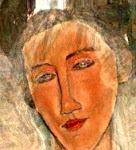Tenerife =
El Teide (but not only). Approximately at the centre of this roughly triangular
island rises Spain’s highest mountain and its most awesome volcano still in
activity.
El Teide
means also tourism, because it attracts millions of visitors annually;
nevertheless, it remains aloof and majestic, oblivious of the thousands
climbing, hiking, taking pictures, crowding the viewing points. It is generous;
it gives everybody whatever they are looking for – sunshine, a snow-capped
peak, cool air, adventure, bizarre lava formations, extra-terrestrial
landscapes (Las Cañadas),
 |
| Las Cañadas |

peculiar vegetation, an observatory to watch the star-studded night sky and more. It is spectacular, and rightly famous. We took a long hike around its foot, at 2000 m a.s.l., rather than ride the cable car to within 200 m of the 3,781 m peak, because I felt a slight shortness of breath. I don’t regret it, since it was equally incredible, I am sure. The sun was shining and we had our picnic in a quiet spot of the mighty scenery, on the south side of the mountain, where the vegetation is almost absent. On the opposite side, there are almost permanent clouds, fog and snow. In fact, the island is divided weather-wise in a W-E direction by El Teide: the North is under the influence of the Gulf Stream, with a high level of humidity, constant westerly winds and very variable weather. The vegetation is luxuriant and the land produces generous crops of bananas, oranges, papayas and every kind of fruits and vegetables. El Teide forms a barrier, so that the South of Tenerife is arid and largely desert-like, the temperatures are remarkably higher than in the North and the sun shines most of the time. This is fortunate for the beach-goers, but less so for people like us, so we decided to be based in Puerto de la Cruz.
Tenerife is not only El Teide, of course. There are fabulous places along the NW coast: Icod de los Vinos, Garachico, Buenavista del Norte (with Punta del Teno), Masca and Los Gigantes, sheer cliffs emerging 600 m from the level of the sea.
 |
| Garachico |
 Garachico
is a well-preserved 18th c. village that used to be Tenerife’s main
port until the 1706 eruption. There is a rock (Roque de Garachico) rising from
the sea just in front of it.
Garachico
is a well-preserved 18th c. village that used to be Tenerife’s main
port until the 1706 eruption. There is a rock (Roque de Garachico) rising from
the sea just in front of it.  |
| Puerta de Tierra park |
 |
| Icod: Bizarre "menorah" dracaena |
 |
| Casa Càceres |
 |
| Courtyard |
 |
| El Drago Milenario (Dracaena draco) |
 |
| Punta de Teno lighthouse |
Punta de Teno is the highlight of the Teno Rural Park, the north-westernmost tip of the island, where land and ocean meet and fight for attention – a most fascinating world’s end.
Masca is a small perched village where a long gorge starts descending to the ocean, a real challenge for hikers. 3 km south where the gorge ends Los Gigantes bluffs begin.
Puerto de
la Cruz, our base camp, is a lively resort, although not quite so popular with
young people as Playa de las Americas, in the South. Puerto Cruz has plenty of
good hotels, restaurants and bars, countless shops and boutiques, attractive
black sand beaches,
quaint corners and beautiful gardens. Our five-day stint was
pleasant and exciting. Our hotel stood directly on the beach, one of the many
multi-storey hotels built in the 1990s-2000s, and our comfortable room looked out
on the ocean. The beach and the hotel pool looked very inviting, unfortunately
the winter temperatures were too low for us.
Next to the hotel was the Castillo
San Felipe, in restoration, and the attractive Playa Jardín. A short walk from
the hotel was the town centre; we reached Plaza del Charco with its numerous
restaurants and bars walking through the pedestrian district of La Ranilla,
recently renovated and filled with great locales. Just north of Plaza del
Charco is the picturesque fisherman’s harbour.
If you continue in the same
direction you reach the Ermita de San Telmo, a small, pretty catholic chapel
surrounded by an equally pretty tropical garden; if you walk further east you
come to Lago Martiánez, a public complex of saltwater pools designed by the
Lanzarote artist César Manrique. Beyond it is the Playa de Martiánez, a
surfers’ paradise.
 |
| Playa Jardín |
 |
| Castillo San Felipe |
 |
| Ermita de San Telmo |
 |
| Lago Martianez |
 |
| Playa Martianez |
Next a couple of recommendations for a good aperitif and/or good dinners.
- Puerto de
la Cruz: Bar Agora for excellent mojitos, friendly staff and reliable wi-fi
connection; Restaurante Régulo, for high-class cuisine and Restaurante La
Cofradía for the freshest fish and seafood in town;
- Icod de los Vinos (north coast): Restaurante Carmen, with typical décor and genuine Tenerife cuisine;
- Costa Adeje (south coast): Restaurante Torre del Mirador, with magnificent setting and very lively atmosphere.
(C) DaniBlue
16th March 2015














No comments:
Post a Comment